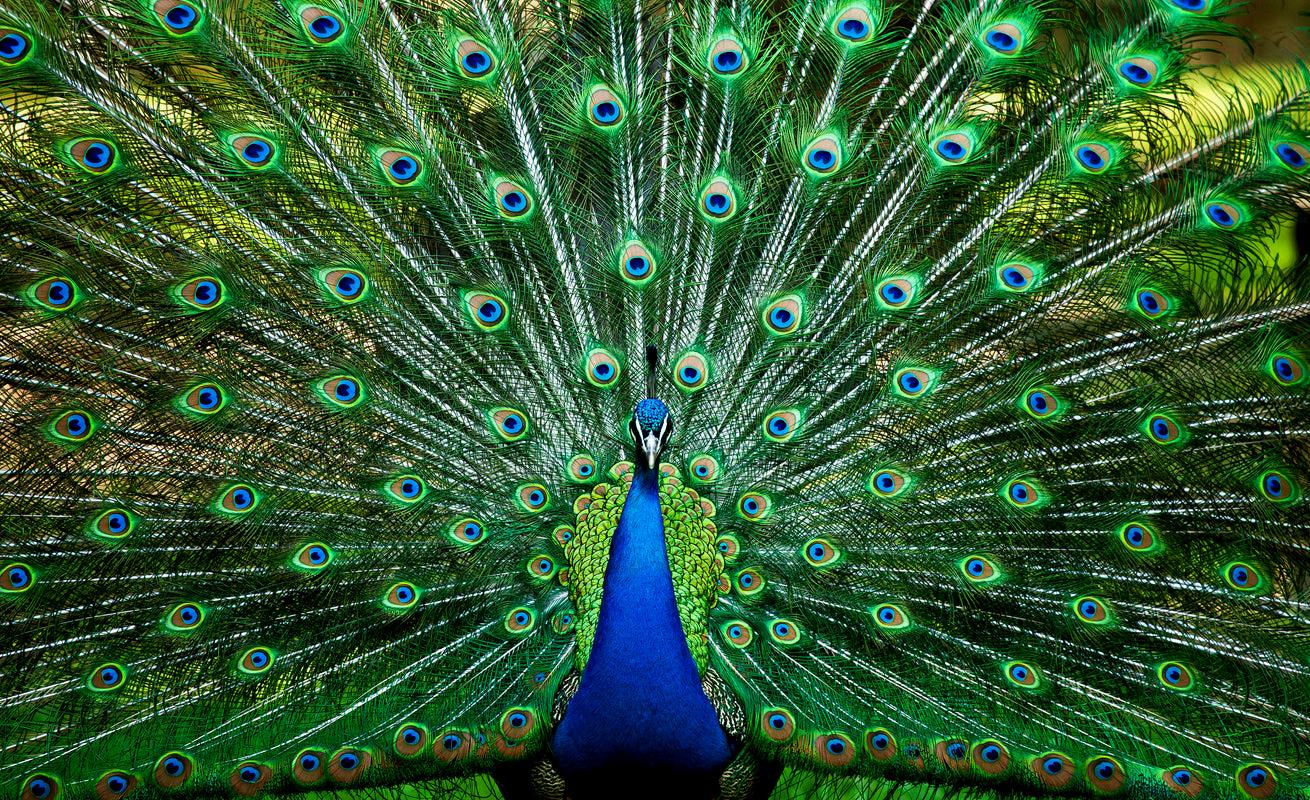Peacocks are known for their stunning appearance, with their vibrant feathers and impressive size. But did you know that they also make a lot of noise during the breeding season? Male peacocks, or peafowls, are particularly vocal during this time as they try to attract a mate.
One of the most distinctive sounds that peacocks make is the “train rattle.” This is the rustling sound that their tail feathers make as they fan them out to display their colorful plumage. The train rattle is a crucial part of the peacock’s courtship display, as it helps to catch the attention of nearby females.
Interestingly, the train rattle also produces a vibration in the air that humans can’t feel, but female peafowls can. This means that the sound is not just a visual display, but also a physical one that can be felt by potential mates.
In addition to the train rattle, male peafowls also make repeated, penetrating screams during the breeding season. These calls are meant to advertise their presence and dominance to nearby females, as well as to warn off other males who might be competing for the same mate.
But perhaps the most unique sound that male peafowls make during the breeding season is the bell-like whoop that they emit just before mating with a female. This call is a signal to the female that he is abot to mate, and it helps to ensure that she is ready and receptive.
The noise that peafowls make during the breeding season is a crucial part of their courtship display. These sounds help them to attract mates, establish dominance, and ensure successful reproduction. While some people might find their calls annoying, they are an important part of the natural world and a fascinating aspect of peacock behavior.
What Is A Peacock Noise Called?
The noise produced by peacocks is commonly referred to as the “train rattle”. This sound is created by the peacock’s tail feathers vibrating rapidly, which cuses a rush of air to move through the feathers, resulting in the distinct rattling sound. This sound is a key part of the peacock’s courtship display, as it is used to attract female peacocks during mating season. The train rattle is also accompanied by other vocalizations such as calls, honks, and grunts. It is worth noting that the vibration created by the train rattle is not perceptible to humans, but female peacocks are able to sense it and use it to evaluate potential mates.

Are Peacocks Noisy?
Peacocks are known to be quite noisy, especially during their breeding season. They produce repeated, penetrating screams whih can be heard from quite a distance. Additionally, the male peacock makes a unique bell-like whoop just before he mates with a female. These sounds are a natural part of the peacock’s behavior and communication during the breeding season. It’s worth noting that these sounds can be quite loud and disruptive, particularly if you live in an area with a large peacock population. if you’re thinking of keeping peacocks or living in an area where they are present, it’s important to be aware of their vocalizations and how they may impact your daily life.
Conclusion
The peacock is known for its loud and distinctive noises, epecially during the breeding season. The male’s train rattle, a sound caused by the vibration of its feathers, is a key part of its mating display and can only be heard by female peacocks. Along with repeated penetrating screams, the male also makes a unique bell-like whoop just before mating. While these sounds may be loud and sometimes disruptive to humans, they are an important part of peacock communication and behavior. Understanding the different noises and calls of peacocks can provide valuable insight into their social interactions and mating habits.
